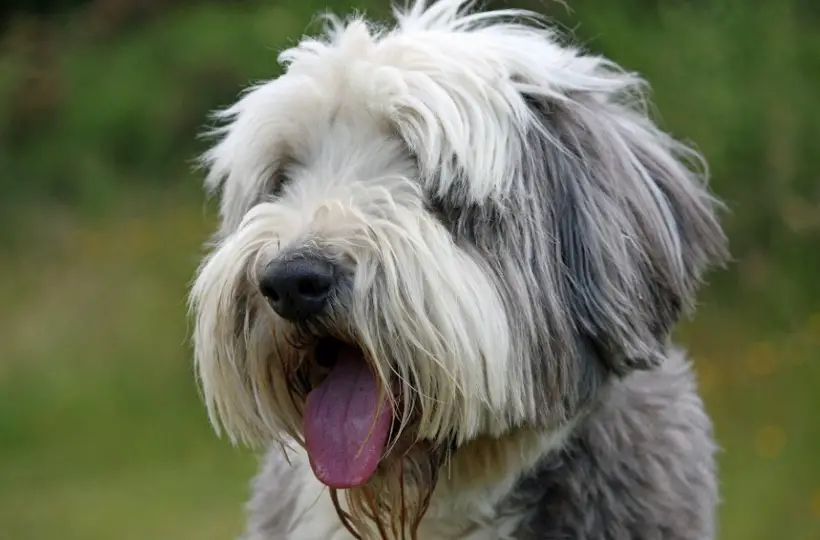Table of Contents
Bearded Collie: All You Need To Know
A bearded collie is the domestic dog breed that belongs to the kingdom of Animalia, phylum Chordata, and class Mammalia. Its genus is Canis, and its species is Canis lupus. Its length is up to 51 to 56 cm, and it weighs about 18 to 27 kg. It lives in a domesticated habitat and prefers herding activities, with a lifespan of up to 12 to 14 years.

Bearded Collie Description
The bearded collie is one of the oldest canine breeds in the United Kingdom, having been created to herd sheep and cattle. The term “collie” comes from the Scottish word “collie,” which means “sheepdog.” It is a working dog native to the Scottish highlands, where it has been employed for centuries. These dogs’ forebears were most likely Polish lowland sheepdogs that were left in Scotland in the 1500s and bred with local herding dogs from the UK. In 1840, the breed was officially recognised.

Bearded collies have a thin build and are a medium-sized dog. It has long hair that covers its ears, legs, tail, and muzzle and has a shaggy coat. It has a double coat, which is made up of a long, rough outer layer and a short, thick undercoat. They come in a variety of colours, including black, blue, brown, and fawn, and have huge white patches or patterns on their chest, feet, and tail.
Bearded collies are smart, active, and powerful dogs. They have a lot of stamina and are quite resilient. These canines are very quick and nimble, making them excellent working dogs. They have a kind and loving personality. These dogs get along well with other animals, particularly if introduced at a young age. Bearded collies require a lot of care and exercise. If left alone for lengthy periods of time, they become bored and may engage in destructive activity.

The Bearded Collie Club of America was formed in 1969 after the bearded collie was first brought to the United States in the late 1950s. The breed gained popularity as a show dog, and it was accepted into the American Kennel Club’s (AKC) Miscellaneous Class in 1977. In 1983, it was granted full membership in the AKC’s Herding Group.
Fun Fact About Bearded Collie!
Bearded collies are a type of herding dog that has been used on farms for hundreds of years. Selective breeding is a technique used to produce canines with certain desirable qualities. Dogs have a number of amazing biological adaptations that allow them to thrive in certain situations. Let’s look at it more precisely.
Herding Behaviour
Herding dogs, such as bearded collies, are employed by farmers to move cattle and sheep. Selective breeding has resulted in this sort of behaviour. Dogs are predators by nature, and humans have been able to create working dogs that are helpful for herding other animals by altering this tendency. People have been able to decrease the dog’s natural tendency to consider cattle and sheep as prey while retaining the dog’s hunting abilities through selective breeding.
Bearded collies use a technique known as’strong eye,’ in which they stare at creatures until they move. These dogs will always go to the animal’s head and redirect its movement. This is in contrast to other herding dog breeds, such as the Australian cattle dog, which would nip at the animals’ heels to urge them to move.
Adapted for Work
Bearded collies have a robust, slender physique with straight front legs and muscled hindquarters, as they were intended to be working dogs. They have an extremely athletic look, which allows them to travel vast places and work long hours.
These traits make this dog a popular choice among shepherds in Scotland, where the terrain is typically steep and rough, and the weather is sometimes cold and severe. These dogs were supposed to help drive the herd to market and regulate the cattle and sheep on the pasture.
Bearded Collie are Color Blind
A dog’s eyesight is dichromate, which means it has colour vision similar to that of a person with red-green colour blindness. This is due to the fact that a dog’s retina has more rod cells, which see in shades of grey, but human retinas include mostly cone cells, which detect colour. Rods require far less light than cones to function, so dogs have considerably superior night vision than humans.
It’s not that dogs can’t see red; it’s simply that it’s less vivid and seems browner to them. The tapetum, which is situated at the rear of the retina in dogs’ eyes, is an extra layer. Because this layer is reflective, any light that is not absorbed by photoreceptors bounces back and forth, giving it a second opportunity to be detected.
This is why dogs have such excellent night vision. While a dog’s vision isn’t very acute, it does have a high level of visual discrimination. Dogs can tell the difference between two humans from up to a mile away!
Bearded Collie Citations
- Canine symmetrical lupoid onychomadesis in bearded collies. Vet Dermatol . 2019 Oct;30(5):411-e124.
- Genetic characterization of Addison’s disease in Bearded Collies. BMC Genomics . 2020 Nov 26;21(1):833.
- Congenital black hair follicular dysplasia in bearded collie puppies. Vet Rec . 1978 Jan 28;102(4):87.







